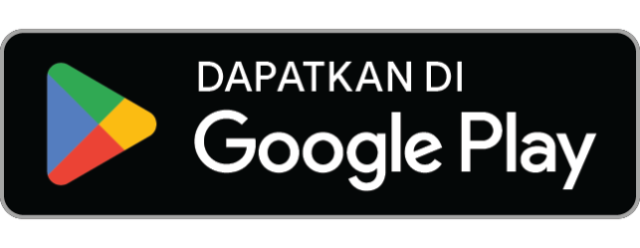A History of Mastery Learning
Basically, mastery learning is not a new idea in the education field. It has been more than 100 years. Comenius introduced this learning strategy in the 17th century. Then it was followed by Pestalozzi in the 18th century and Herbert Spencer in the 19th century.
The Mastery learning strategy was still being developed. In 1963 and 1971, this learning strategy became more popular since John B. Caroll and Benjamin Bloom made it more operational to be applied in education. Besides, up to date.
Mastery learning appears to renew the older learning methods such as the conventional or lecturing method, discussion, demonstration, and recitation. Those methods have several weaknesses, which makes us unable to deny that mastery learning is more efficient to use.
The conventional method, where the teachers give spoken explanations in front of the class while the students should keep silent and listen, is the most simple method. The teachers do not need to prepare learning tools. However, the students will be passive. The learning process will be too boring because the focus is only verbalism or the meaning of words without any point of mastery achievement.
Then, the discussion method is only appropriate for small parameters and limited themes, and the material of discussion will only be mastered by those who love speaking more. While the rest are difficult to involve and clearly understand the material. Besides, the demonstration method can not be applied to a large number of students and not all materials can be demonstrated. While the recitation method, which requires students to make a summary, is identical, it tends to cause plagiarism issues.
Totally applying those methods in this century will have difficulties and challenges. The development of technology requires a teaching and learning process to adapt to changes and challenges. Technology should be integrated to help students master knowledge. Then we need a learning method or strategy that is in line with technology usage in mastering the material. That is called a mastery learning approach. Media of learning with technology integration will make students engaged and actively involved in the learning process. While the mastery learning strategy will help students master the material comprehensively before moving on to the next material.
In general, mastery learning is a systematic learning strategy that is individual-based. It enables students to progress at their own pace. Therefore, the benchmark of mastery learning is toward personal students, not classes. It allows them to progress more optimally.

The Concept of Mastery Learning
Mastery learning has students’ center orientation. It doesn’t force students to master many materials at once. They will only continue to the next material if they have mastered the material that is being learnt.
The first thing to do in a mastery learning strategy is to give explanations directly or use media such as tutorial videos, slides, or animation. Then, students will be given a quiz to measure their understanding of the material. In online learning, the quiz can be given online as well. When the students cannot achieve the minimum standard score, for example, 80%, they will be given some homework and test preparation to practice more. Then on another day, the teacher will give a quiz again to repair their previous score. After the students achieve the standard minimum score, the teacher will move on to the next chapter.
The Benefit of Mastery Learning
Mastery learning meets the modern psychology concept of appreciating every single student at his or her own learning pace. It means the learning duration will be flexible depending on the student’s ability to comprehend the material. When the students feel they have not understood yet, they can repeat it by reading or watching the learning media again.
Students can arrange their schedule to master the material using the provided learning media. It can train them to develop their confidence and problem-solving skills. Hence, the learning process will be meaningful and efficient because the students can comprehend the material totally without forcing themselves to follow other students’ pace. Moreover, it gives them a chance to develop their soft skills.
Implementation of the Mastery Learning Strategy in E-learning
Digitalizing learning media is important in implementing mastery learning for e-learning. For instance, videos contain tutorials on accomplishing problems in math or other subjects; learning videos; animation; presentation slides; e-books; even online quizzes. Those learning media enable students to learn the material as much as they want until they understand the material. Through an online quiz which gives direct results, they are able to know which part they haven’t mastered yet as well. so they can learn more about it.
The explanation above indicates that mastery learning is in line with e-learning concepts. Both give flexibility to students in mastering the material according to their own pace. E-learning that implements a remote learning strategy with the use of technology will be very helpful to distribute material to the students. Then, the students can learn it without any limitations of time and space. Various institutions have applied mastery learning strategies in their e-learning programs, such as Khan Academy, edX, Quipper, and Coursera.

Mastery of Learning Effectiveness in Several Institutions
Khan Academy
Khan Academy is a non-profit organization with a precious mission to provide world-wide free education for everyone everywhere. The goal of this site is to help everyone understand material or accomplish tasks from school or college. It uses videos to teach concepts of various fields such as algebra, chemistry, physics, biology, computers, immunology, history, art, opportunity cost, financing, logic, Singapore Math, and even preparation for enrolling in university, which is GMAT. This method supports mastery learning, which allows students to learn something based on the pace they need or watch the video as much as they want till they master it.
The founder of Khan Academy is Salman Amin “Sal” Khan, a former financial analyst from Bangladesh who gives tutoring, mentoring, and testing freely to everyone. The success of Khan Academy is in its math tutorials that make math easier, although this subject is always challenging for most students. Basic math materials are conveyed in various media, such as videos and exercises. Khan also gives narrations about the materials and students’ weaknesses to help parents teach their kids basic math.
In addition to having various fields to discuss, Khan Academy has thousands of resources which are translated into various languages. Therefore, this site can be enjoyed by everyone, even if they do not speak English. Khan Academy has been visited by more than 50.000 visitors a day.
edX
Mastery learning is one effort to increase the quality of learning for students. Applying mastery learning in college means requiring all students to master all materials and learning goals thoroughly. However, implementing mastery learning in college is not that easy because the number of students in a course is too large, the lack of facilities and infrastructure, and limited time since relying on face-to-face learning only.
To address those challenges, online learning or e-learning will be a great solution to achieve learning goals and students’ mastery. Besides Khan Academy, edX is also implementing mastery learning through e-learning programs. While Khan Academy focuses more on basic concepts of math and other materials for schools, edX emphasizes more mastery of college concepts and materials.
edX is also a non-profit organization that uses an open-source software platform. It was built by two popular institutions in the US: the Massachusetts Institute of Technology (MIT) and Harvard University. However, many universities also participate.In 2016, edX had about 10 million students, 1.270 courses, and more than 70 schools, non-profit organizations, and companies offering courses on edX.
edX is a form of MOOC (Massive Open Online Courses) that provides online courses by integrating a program of knowledge distribution for free into an integrated system that involves other educational institutions. There are more than 30 course fields that can be chosen suitable for the course you are now taking.
edX courses consist of weekly learning that uses various learning media such as tutorial videos, online books, free e-books, and discussion forums with multi-discussion features. There will also be examinations such as multiple choice, fill in the blank, essay, simple experiment, or using a lab simulation application. The result will appear immediately as it enables students to learn more about the points that they need to improve. It is in line with the mastery learning strategy.
Basically, there are several groups of courses in edX. They are starting soon or upcoming courses; current courses (the courses have been run); archived courses (the courses have been done); self-paced courses (the courses can be taken whenever you want); and xseries courses (courses that provide a free certificate (honor code certificate) or a certificate with some amount of money (verified course certificate).
Given the success of those two institutions, we should not pass up the opportunity to implement mastery learning wrapped in online learning or e-learning. This is for the sake of students’ thorough mastery. Furthermore, it can also be applied to employees in online company training to upgrade their skills.

